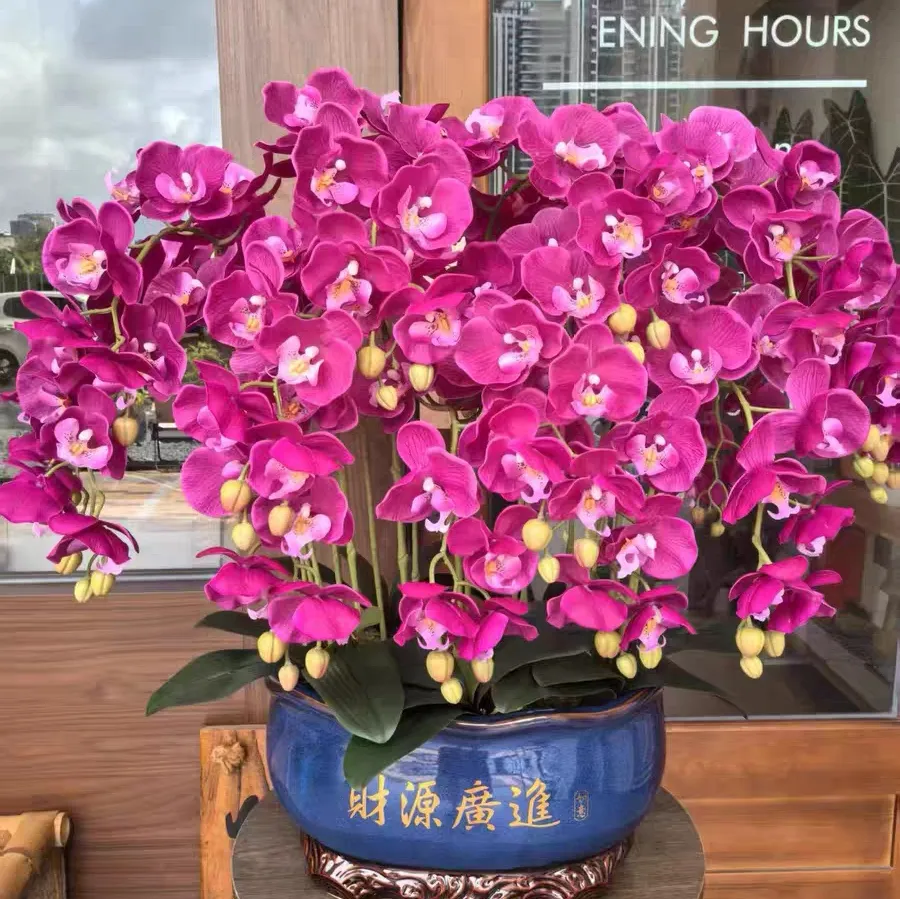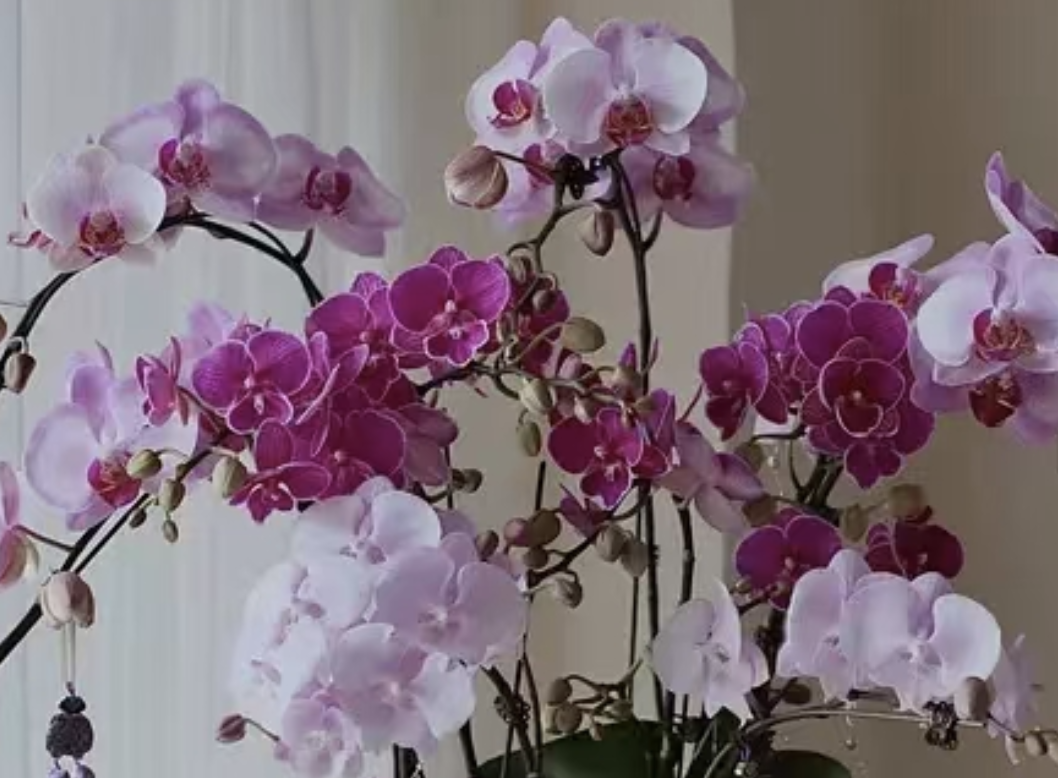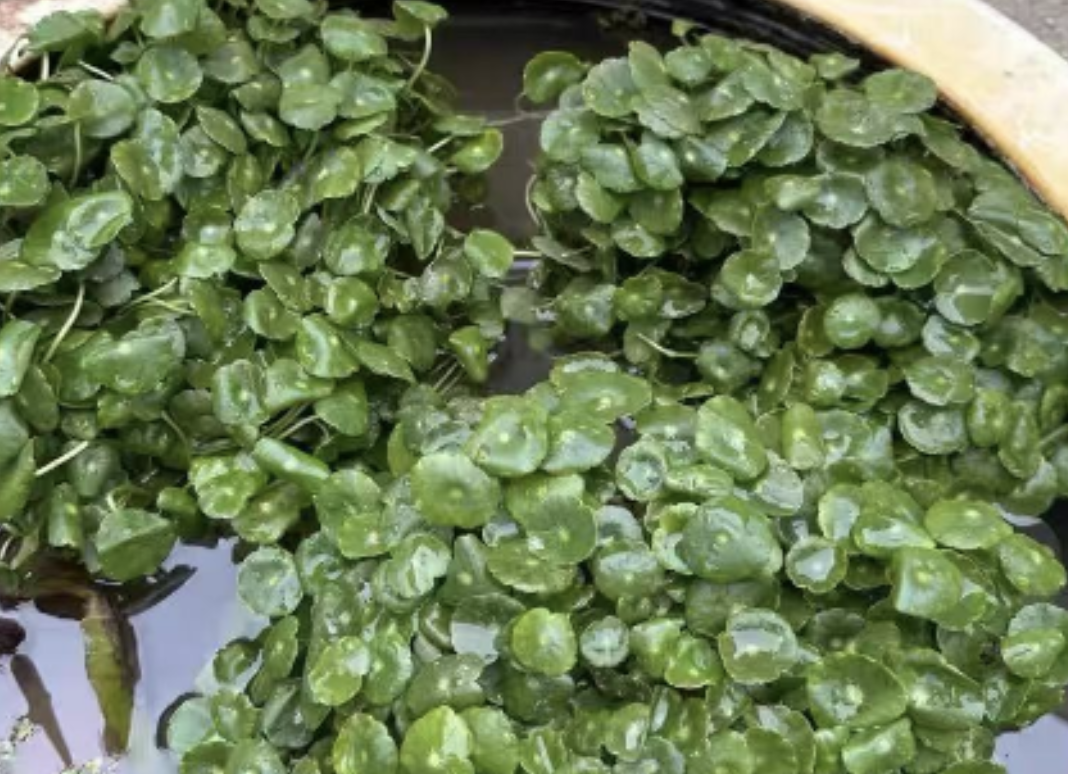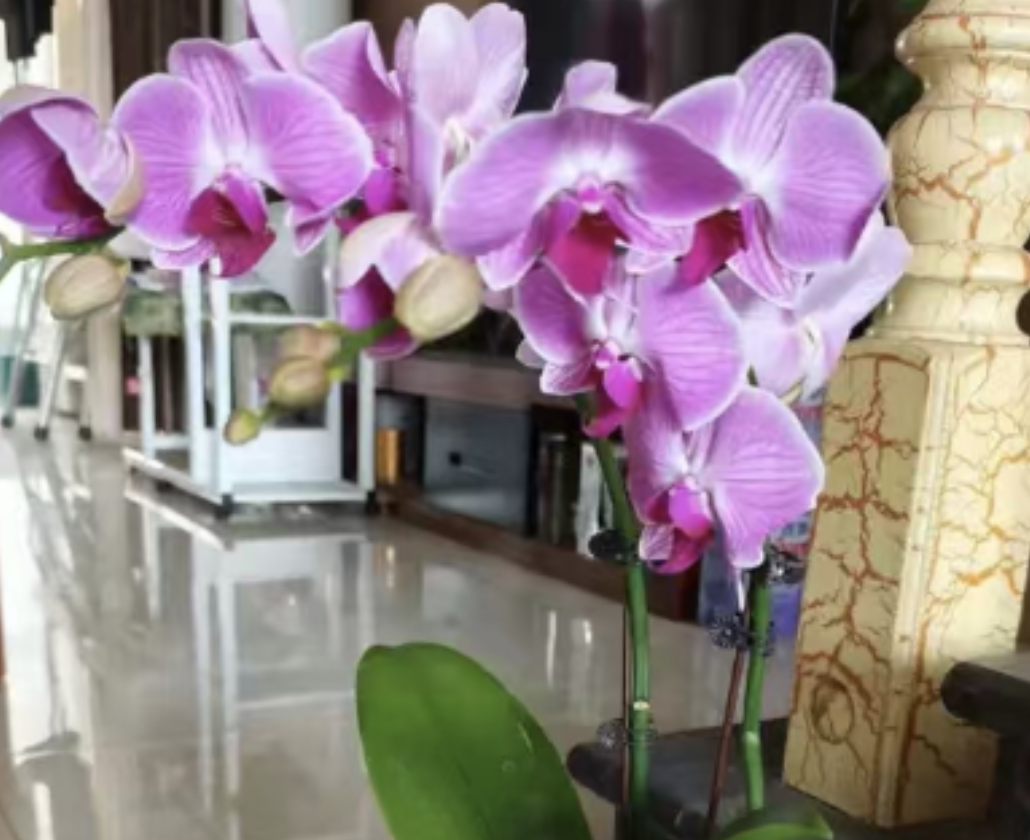The presence of moisture (water vapor) in Phalaenopsis flower pots is often a sign of abnormalities in the plant's growing environment. If not addressed promptly, it may affect the plant's health.
### I. Main Causes and Impacts of Moisture in Flower Pots
1. **Watering Issues**
Phalaenopsis is an epiphytic plant, requiring a loose and well-ventilated growing medium (such as sphagnum moss or bark). Overwatering—either too frequent or excessive amounts at a time—can leave the medium saturated for long periods, leading to waterlogging. In this case, the roots may be damaged due to oxygen deprivation, losing their ability to absorb water and nutrients normally. This not only causes petals to wilt and leaves to lose luster but can also lead to root rot in severe cases, eventually resulting in the entire plant withering.
2. **Temperature Fluctuations**
Phalaenopsis thrives in temperatures between 16°C and 30°C. During the growing season (spring and summer), temperatures below 15°C will inhibit growth. When temperatures exceed 30°C, the plant's respiration intensifies, accelerating water transpiration. The evaporated moisture from the medium may condense into vapor on the pot walls if the pot temperature is lower than the air temperature. Additionally, high temperatures disrupt the plant's metabolic balance, causing petals to lose water, wilt, and growth to stagnate.
3. **Excessive or Inadequate Light**
Phalaenopsis prefers diffused light. Prolonged exposure to direct strong sunlight can scorch leaves and petals. Meanwhile, intense light rapidly raises the ambient temperature, causing the medium's moisture to evaporate quickly. If ventilation is poor, the evaporated moisture cannot disperse in time and will condense on the pot walls. Furthermore, direct强光直射 causes the plant's water loss rate to exceed its absorption rate, directly manifesting as wilting petals and scorched edges.
### II. Measures to Take When Moisture Is Observed in the Pot
Once moisture is noticed in the pot, immediately adjust the environment with the following steps:
1. Move the plant to a cool, well-ventilated location (such as a bright windowsill with diffused light or a well-aerated corner), avoiding direct sunlight and high-temperature environments.
2. If there is obvious waterlogging in the medium, gently remove the plant and inspect the roots. Healthy roots are white or light green, while rotten roots are brown and slimy. Trim off rotten roots and replace the medium with fresh, breathable material (e.g., sphagnum moss should be squeezed dry before use).
3. Suspend watering until the surface of the medium dries out and the moisture on the pot walls disappears. Then resume the normal watering schedule, following the "dry-to-wet" principle—water only when the top 2-3 centimeters of the medium feel dry.
### III. Daily Prevention Methods
1. When watering, use a narrow-spouted壶 to pour water slowly along the edge of the pot, avoiding direct splashing on leaves and petals. Ensure the drainage holes at the bottom of the pot are unobstructed to prevent waterlogging.
2. During high-temperature summers, control the ambient temperature below 30°C by opening windows for ventilation or misting (avoid leaving the leaf surface damp for extended periods).
3. Place the plant in a bright environment with diffused light daily (such as an east-facing or west-facing windowsill, avoiding midday强光). If necessary, use a sheer curtain to block part of the light.
What are the reasons for the presence of moisture (water vapor) in Phalaenopsis flower pots?

Share with
Tagged in :




Leave a Reply